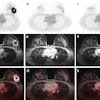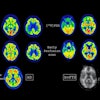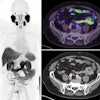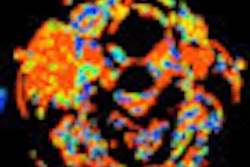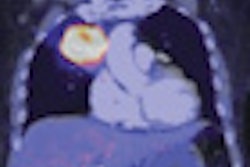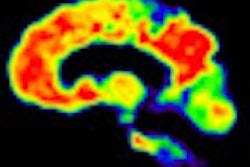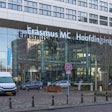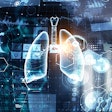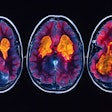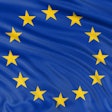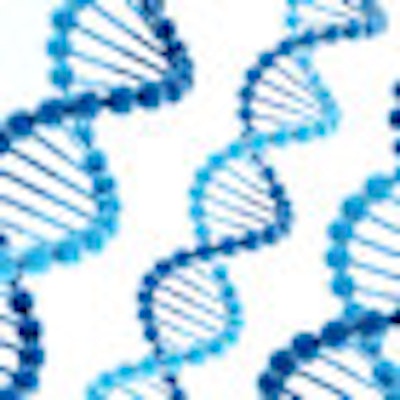
Most people have a friend, colleague, or family member who has experienced cancer at some point in their life. Anyone who has supported someone through treatment knows that a wide variety of healthcare professionals are involved in helping those affected by the disease. Naturally, the most visible of these professionals are the clinicians, nurses, radiographers, life scientists, and medical physicists who operate within the hospital environment. However, there are also many scientists and engineers who design, develop, and manufacture the equipment and tools used in cancer treatment. This is the area where I have chosen to make my career.
I work at Elekta, a global company that delivers clinical solutions for cancer care, including image-guided radiation therapy, stereotactic radiotherapy, and radiosurgery, in which beams of radiation are accurately focused in a 3D coordinate system to treat small target areas. The company has about 3,300 staff, and every day at least 100,000 patients at more than 5,000 hospitals around the world receive diagnosis, treatment, or follow-up care with the help of a solution from Elekta.
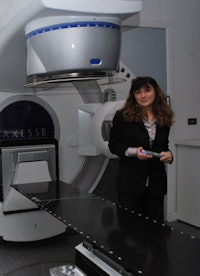 Giulia Thompson, PhD, is leader of Elekta's U.K. R&D physics team. Image courtesy of Elekta.
Giulia Thompson, PhD, is leader of Elekta's U.K. R&D physics team. Image courtesy of Elekta.
The company's corporate headquarters are located in Stockholm, Sweden, but I am based in Crawley, U.K., which is the main manufacturing site for Elekta's radiotherapy linear accelerators. My role there is to lead the physics team that works in the firm's oncology product area, which covers both the hardware and software related to the linear accelerators used for patient treatment, and also the x-ray systems for patient imaging. This means that we help to develop the systems that generate, monitor, and shape the beams used to treat patients, and we also contribute to development projects for the cone-beam computed tomography unit that is used for image guidance.
The physics team is involved throughout the research and development cycle, from defining product requirements and providing input to new designs (for example, by computer modeling and prototype testing) to the final phase, when intensive testing is carried out in dedicated radiation bunkers before the equipment is released for use.
Research and mobility
I received my undergraduate degree in physics at the University of Bologna, Italy, where I did my thesis project on gamma-ray spectroscopy, using Monte Carlo techniques to model charge-trapping effects in semiconductor detectors. But I had always been interested in applied radiation physics, and after graduation I got involved in a research project that used reactor-based neutron beams in cancer therapy. During this time I was part of a close-knit research group that studied applications of radiation physics in industry, medicine, and archaeology.
I have very fond memories of my early research. Bologna is my hometown and is famous for its medieval towers, its gourmet food, its terracotta red-tiled roofs -- and, of course, the university itself, which is among the oldest academic institutions in the world. However, I was always aware that to grow as a scientist I would need to experience new research environments, ideally by working abroad. So after I earned my master's degree in medical physics, I applied for a Marie Curie Fellowship under the European Union's Training and Mobility of Researchers scheme. Winning this fellowship allowed me to move to the U.K., where I joined the department of medical physics and bioengineering at University College London.
For my doctor of philosophy degree in radiation physics, I worked on the design and experimental development of a novel imaging system for nuclear medicine applications using a Compton camera. It was the perfect project for me, combining my interests in radiation detector technology, computer-simulation techniques, and medical physics. This work was carried out in collaboration with Middlesex Hospital and also with the high-energy physics group at Imperial College London, since the prototype system used an electronic chip originally designed for CERN's Large Hadron Collider. Working with these different groups was a great experience and gave me the opportunity to develop new technical knowledge, as well as to enhance my team work, task coordination, and planning skills.
I enjoyed my PhD research, but after spending quite a long time in academia, I felt ready for a change. I had always been attracted by the idea of working in industry, and I wanted to join a company where innovative technology and team work resulted in a real-life product. I applied for a position with Elekta in 2000, and I was offered a job in its development team.
Career progression
As a physicist working in R&D, I was quickly given the opportunity to make use of my experience with Monte Carlo modeling techniques, while also applying my knowledge of radiation physics and my experimental skills to contribute to the design of new oncology-related products. These included an improved collimation system for electron beams, which reduced the radiation dose outside the area being targeted for treatment, as well as different versions of x-ray beam-shaping devices called multileaf collimators, which use a series of tungsten blades ("leaves") that can move independently to generate irregular beam shapes.
As my experience level grew, I also started to manage a number of physics test programs, in which new products are thoroughly assessed before being released for clinical use. These assessments are done to verify product safety and performance, and to ensure compliance with the stringent requirements in the international standards that regulate the medical device industry.
Elekta has a very collaborative approach to R&D, which means that our products are developed together with customers working in research, university clinics, and other institutions. For example, a few years ago I co-supervised a PhD project at the joint department of physics of the Institute of Cancer Research and Royal Marsden Hospital, where we investigated an alternative system for patient imaging. Doing projects like this allowed me to maintain contact with academic research and, later on, to become a senior research physicist at Elekta.
I have worked on many great projects over the years, but the one that stands out for me is our latest beam-shaping device, Agility. This device consists of 160 tungsten leaves that move independently at unprecedented speed, producing dose distributions that accurately conform to the tumor's volume while shortening the treatment delivery time to as little as a couple of minutes for patients with head and neck cancers. I have been involved with the project since it began more than five years ago, and the moment in early April this year when the first patient was treated with Agility (at St. James' University Hospital in Leeds) was very special for me.
While I am still very much involved with the technical aspects of Elekta's physics program, for the past two years I have also been the leader of the company's U.K. R&D physics team. This means that I am responsible for resource and task management within a team of 14 people on a daily basis. In addition, I work on developing the skills and capabilities within the group -- for example by introducing new computer-modeling tools and experimental equipment, and by identifying appropriate training for staff. Finally, our group is still expanding and I am actively involved in the recruitment process.
Getting into the industry
I am often asked whether a PhD is necessary to work as an R&D physicist in the oncology industry. Looking at my own experience, I think that my PhD certainly equipped me with many useful skills, and most members of my current team also have a PhD or master's degree in fields such as radiation physics, medical physics, and nuclear or particle physics. Others have come from the fields of laser plasma physics, radiofrequency physics, and imaging detector technology, while a few have a specialized background in beam generation and accelerator technology.
However, there are also alternative routes into commercial R&D, including internships, industrial placements, and apprenticeships. These routes offer a "fast track" not only to learning the practical aspects of the technical job, but also to understanding how a large commercial organization operates. Indeed, Elekta has recently launched a two-year graduate program, and is planning to train about 10 physics and engineering graduates each year via a series of placements in departments spread across the key business processes of the company. The program will include technical and personal skills training, along with a support network of mentors and coaches.
My studies in physics have allowed me to pursue a very interesting career, working with innovative technology that helps people's lives. The work environment at Elekta is also very good: The expertise of staff members is valued, I am surrounded by talented colleagues, and the company really listens to customers and strives to provide what they need. There are more exciting developments on the horizon and I look forward to being a part of them.
Giulia Thompson, PhD, leads the U.K. R&D physics team at Elekta. E-mail [email protected].
This article first appeared in the July 2012 issue of Physics World.
The comments and observations expressed herein do not necessarily reflect the opinions of AuntMinnieEurope.com, nor should they be construed as an endorsement or admonishment of any particular vendor, analyst, industry consultant, or consulting group.
© IOP Publishing Limited. Republished with permission from medicalphysicsweb, a community website covering fundamental research and emerging technologies in medical imaging and radiation therapy.
© IOP Publishing Limited. Republished with permission from Physics World.

